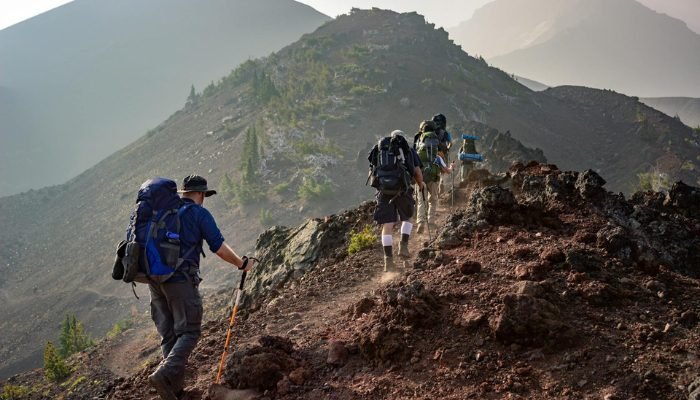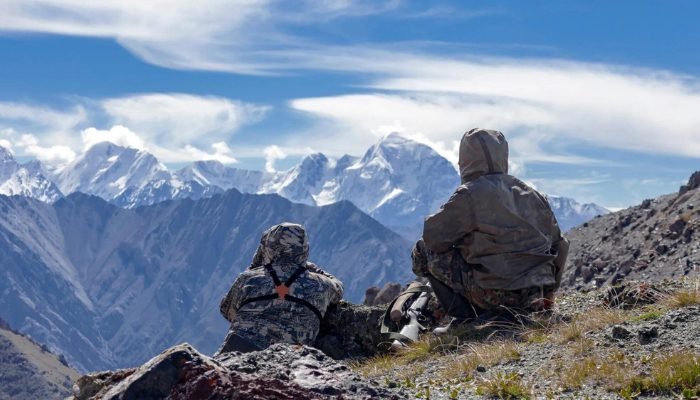Understanding Acute Mountain Sickness (AMS) : Symptoms, Causes, and Prevention
Understanding Acute Mountain Sickness (AMS) : Symptoms, Causes, and Prevention
Acute Mountain Sickness (AMS) is a common condition experienced by individuals ascending to high altitudes, typically above 2,500 meters (approximately 8,000 feet). Also known as altitude sickness, AMS can affect anyone, regardless of age or fitness level, and it’s essential to understand its symptoms, causes, and preventive measures before embarking on high-altitude adventures.
Symptoms of Acute Mountain Sickness

AMS manifests through a range of symptoms, which can vary in severity and onset time. Common signs and symptoms include:
1. Headache
A persistent headache, often described as throbbing or pounding, is one of the earliest and most prevalent symptoms of AMS.
2. Fatigue
Feeling unusually tired or weak, despite minimal physical exertion, is another common indication of AMS.
3. Dizziness or lightheadedness
Individuals may experience a sensation of dizziness or feeling faint, particularly when standing up quickly.
4. Nausea and vomiting
Some people may feel nauseous or experience vomiting, which can contribute to dehydration.
5. Loss of appetite
A decreased desire to eat or a loss of appetite is common among individuals with AMS.
6. Difficulty sleeping
Many individuals find it challenging to sleep well at higher altitudes, leading to disrupted sleep patterns.
Causes of Acute Mountain Sickness

AMS occurs due to reduced air pressure and lower oxygen levels at higher altitudes. As you ascend to higher elevations, the air becomes thinner, resulting in a decrease in the amount of oxygen available for inhalation. This decrease in oxygen saturation can lead to hypoxia, a condition where the body’s tissues receive insufficient oxygen.
The body responds to hypoxia by increasing respiratory rate and heart rate to compensate for the reduced oxygen levels. However, this adjustment takes time, and if you ascend too rapidly, your body may struggle to acclimatize, leading to AMS.
Factors that can increase the risk of developing AMS include

1. Rapid ascent
Ascending to high altitudes too quickly without allowing time for acclimatization significantly increases the risk of AMS.
2. Individual susceptibility
Some individuals are more susceptible to AMS than others, irrespective of their fitness level or previous altitude experience.
3. High altitude
Altitudes above 2,500 meters (approximately 8,000 feet) are considered high, with AMS becoming more prevalent as elevation increases.
4. Dehydration
Inadequate fluid intake can exacerbate AMS symptoms, as dehydration can worsen the body’s ability to acclimatize to high altitudes.
Preventive Measures for Acute Mountain Sickness

While AMS cannot always be entirely prevented, several measures can help reduce the risk and severity of symptoms:
1. Gradual ascent
Ascend to higher altitudes gradually, allowing your body time to acclimatize to the decrease in oxygen levels. A rule of thumb is to avoid ascending more than 300-500 meters (approximately 1,000-1,600 feet) per day once above 2,500 meters.
2. Stay hydrated
Drink plenty of fluids, preferably water, to stay hydrated and aid in acclimatization. Avoid excessive alcohol and caffeine consumption, as these can contribute to dehydration.
3. Adequate rest
Ensure you get adequate rest and sleep during your ascent to high altitudes. Fatigue can exacerbate AMS symptoms, so listen to your body and take breaks as needed.
4. Medications
In some cases, medications such as acetazolamide (Diamox) may be prescribed to help prevent or alleviate AMS symptoms. Consult a healthcare professional before using any medication for altitude sickness.
5. Descend if necessary
If symptoms of AMS become severe or life-threatening, descend to a lower altitude immediately. Prompt descent is the most effective treatment for AMS and can prevent further complications.
Conclusion
Acute Mountain Sickness is a common yet potentially serious condition that can affect individuals ascending to high altitudes. By understanding the symptoms, causes, and preventive measures associated with AMS, you can better prepare yourself for high-altitude adventures and minimize the risk of experiencing its debilitating effects. Prioritize gradual ascent, stay hydrated, and listen to your body’s signals to ensure a safe and enjoyable mountain experience.

